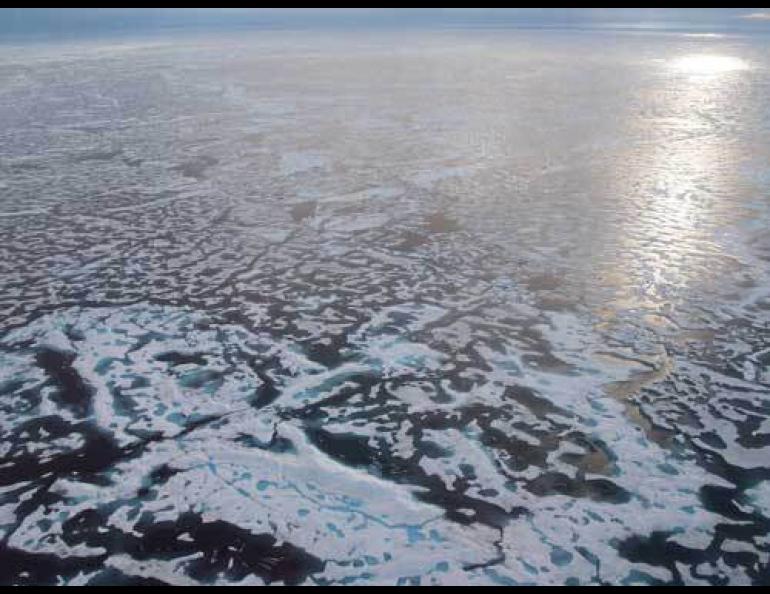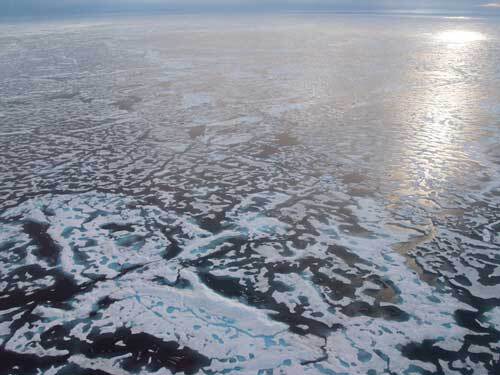
"Unusually thin, rotten ice" north of Alaska
The news from the top of the world, according to William Chapman, who follows the fate of sea ice from his office at University of Illinois at Urbana-Champaign: “September 12, 2007…The (northern hemisphere) sea ice area is currently at its historic minimum (2.92 million square kilometers) representing a 27 percent drop in sea ice coverage compared to the previous (2005) record (northern hemisphere) ice minimum.”
The ice that floats on the Arctic Ocean is now the smallest conglomeration of frozen jigsaw puzzle pieces that people have seen in the era of satellites. That record is short, only going back to 1979, but the ice loss has been outracing some conservative computer models. According to an Alaska scientist just back from the ice pack, northern ice is not what she had seen before.
Jenny Hutchings is a sea-ice researcher for the International Arctic Research Center at the University of Alaska Fairbanks. She cruised the Beaufort Sea north of Alaska for more than a month from late July to late August. She was a passenger on the Canada Coast Guard icebreaker Louis St. Laurent. It was her second straight year in the area.
Satellite measurements aren’t perfect, and Hutchings noticed that some areas the satellites revealed as ice-free were instead ice, with water ponded on top. But for the most part, she noticed an ice mass in bad shape.
“We were seeing unusually thin, rotten ice, all the way to 79 degrees north,” Hutchings said. “That’s where you would expect some of the heaviest ice, and we were having no trouble at all getting through.”
Hutchings was on the cruise to validate satellite observations with what she saw and to continue tracking ice around the Beaufort Sea, the portion of the Arctic Ocean north of Alaska and northwest of Canada. She said much of the ice they encountered was ice that has survived from one to three winters. She was surprised in the northern regions of the trip to find no first-year ice that formed last winter. New ice can grow to five feet thick in one winter, but it is also more vulnerable to melting than multi-year ice.
The Louis St. Laurent encountered relatively easy going throughout the entire cruise, Hutchings said, including their route along the northwestern edge of Canada’s Banks Island.
“There wasn’t much ice around Banks Island,” she said. “Normally, there’s a lot of old, multi-year ice there and it’s more concentrated.”
USGS scientists, including Steve Amstrup of Anchorage, recently released a report about how shrinking sea ice could doom a majority of the world’s polar bears, and all of them off the coast of Alaska, within 50 years. On the northern portions of her cruise, Hutchings saw several polar bears, which seemed to be in good health, she said.
Other than the loss of white bears, which is very sad indeed, why should we care about the loss of ice that very few people will ever see? Scientists have described the far north as “the refrigerator of the northern hemisphere,” and a small or vanished ice pack could result in less snow in places as far away as Colorado, and strange weather throughout the northern hemisphere.
Hutchings said she would look at her data this winter in an attempt to find out if the Beaufort Sea ice can recover during the cold season, which just began in the far north.
“The more I look at the situation this year, the more I realize how unusual it is,” she said.





